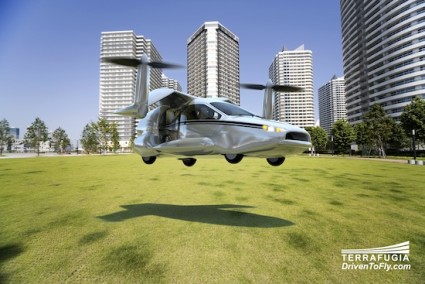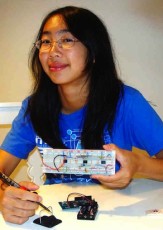 Although it sounds like a futuristic fantasy straight out of The Jetsons, inventors have been designing flying cars since the early 20th century. Ultimate convenience and freedom — who wouldn’t want it? Well, the Federal Aviation Administration, for one. Despite the many challenges involved in creating this dream machine, at least a dozen serious attempts are on record. We’ll look at just a few noteworthy specimens before turning to the latest, most promising effort.
Although it sounds like a futuristic fantasy straight out of The Jetsons, inventors have been designing flying cars since the early 20th century. Ultimate convenience and freedom — who wouldn’t want it? Well, the Federal Aviation Administration, for one. Despite the many challenges involved in creating this dream machine, at least a dozen serious attempts are on record. We’ll look at just a few noteworthy specimens before turning to the latest, most promising effort.
In 1917, American aviation pioneer Glenn Curtiss patented the Model 11 Autoplane — a three-seater featuring a fully enclosed aluminum body, plastic windows, and removable wings. While the Autoplane could be driven on roads — powered by its propeller — it never really made it off the ground, apart from a few well-intentioned hops. Work on it stopped when World War I started.
In 1947, respected inventor/designer Henry Dreyfuss created the Convaircar, which looked a lot like a small sedan with a single-engine airplane mounted on its roof. On the road, the plane elements could be towed behind the car. In the air, a fiberglass body kept things light, a 25-hp engine made it move, and a 35-foot wingspan provided lift. Sadly, a fatal test flight doomed this attempt.
Despite its name, the Moller Skycar is no road car — it’s called “a personal vertical takeoff and landing vehicle,” which would make it a car of the skies only. It has four turbine engines, very short wings, and a promised top speed of 375 mph. The first test flight was in 1967, so the vehicle has been evolving for decades, but it’s still awaiting FAA approvals.
Now, Massachusetts-based Terrafugia (Latin for “escape the Earth”) aims to revolutionize the field. It’s developing the TF-X™, a four-seat, plug-in gas-electric hybrid flying car that can be driven or flown. Terrafugia claims it will seat four, take off and land vertically, have a 500-mile flight range, and fit in a regular garage (the wings fold up). And it will land itself, no human assist required. In case of problems, a full-vehicle parachute system will activate. No price info yet, but the company hopes to make it competitive with high-end cars.
Up, up, and away!





